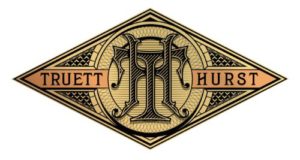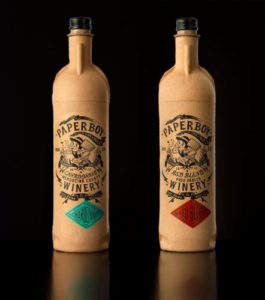 Wine industry leader in innovation Truett-Hurst wine company of Healdsburg, California, says no to marketing green-washing. The release of the first paper wine bottle in the U.S. from Truett-Hurst is the real thing. The paper wine bottle, branded PaperBoy, is a molded outer shell in the shape of a wine bottle, made from recycled cardboard with a plastic liner.
Wine industry leader in innovation Truett-Hurst wine company of Healdsburg, California, says no to marketing green-washing. The release of the first paper wine bottle in the U.S. from Truett-Hurst is the real thing. The paper wine bottle, branded PaperBoy, is a molded outer shell in the shape of a wine bottle, made from recycled cardboard with a plastic liner.
The entire package is 85 percent lighter than a glass bottle and is easily recyclable. From production to shipping to recycling, PaperBoy proves the wine business can operate with a significantly reduced carbon footprint.
Pleasanton, California–based Safeway will partner with Truett-Hurst in the initial release of PaperBoy nationwide.
PaperBoy contains appellation–based, super-premium wines sourced from the Mendocino and Paso Robles growing regions and crafted by winemaker Virginia Marie Lambrix, also the winemaker for VML. Introductory PaperBoy wines are a 2012 Paso Robles Red Blend ($14.99) and a 2012 Mendocino Chardonnay ($13.99). Lambrix is passionate about innovation.
She says, “We at Truett-Hurst Inc. believe that if the quality of the wine exceeds a customer’s expectation, then new, cutting-edge packaging will become more mainstream.”
Truett Hurst Incentive
On its quest to change the way people think about and buy wine, Truett-Hurst is responding to lifestyle choices–to eco-conscious wine lovers on the go. Paper Boy provides a responsible way to carry wine outdoors. Campers, hikers, and fishermen can carry this lightweight package–only 1.9 lbs. filled–and enjoy premium wine from a 750ml bottle almost anywhere, collapsing it when finished for return to a recycling site. “We’re thrilled to be a pioneer of this earth-friendly, high-quality, innovative package. It could create an entirely new category in wine,” says Truett-Hurst’s president and CEO, Phil Hurst.
About the Design
 Paper Boy is in part, the brainstorm of Truett-Hurst designer, Kevin Shaw of Stranger & Stranger. Shaw worked with the Truett-Hurst team and Green Bottle, a UK-based paper bottle manufacturer, to develop this groundbreaking package. Extensive testing has proven the Paper Boy bottle to be superior to a traditional glass bottle.
Paper Boy is in part, the brainstorm of Truett-Hurst designer, Kevin Shaw of Stranger & Stranger. Shaw worked with the Truett-Hurst team and Green Bottle, a UK-based paper bottle manufacturer, to develop this groundbreaking package. Extensive testing has proven the Paper Boy bottle to be superior to a traditional glass bottle.
It insulates better, recycles more readily, and is lighter and more transportable, yet it looks and acts like a traditional glass bottle. Shaw added the lighthearted and retro-cool feel of the brand identity. He comments, “This is a product that is unashamedly different and it was important that the name was iconic to own the medium, and that the branding was bright, strong, and fearless.”
Environmental Impact
Packaging waste is a huge and growing problem in modern society, particularly in the wine industry. According wrap.org.uk, 17.5 billion bottles of wine are consumed annually around the globe, producing 8.75 billion tons of glass waste–more packaging waste than any other product in the food or drink sector.
PaperBoy offers a better alternative. The bottle’s cardboard outer can go into mainstream recycling streams, which are used to produce other cardboard products. The cap and neck assembly pieces are also recyclable, and the plastic liner is suitable for “waste to energy” programs. In total, the overall carbon footprint of PaperBoy, from production to shipping to recycling, is significantly lower than glass. Even the 12-pack cartons are produced from recycled paper.
Each PaperBoy bottle comes with instructions for how to break the bottle down for disposal. As a winemaker, Virginia Lambrix admires the economic practicality of PaperBoy.
She says, “Wines that will be consumed almost immediately do not need a heavy, environmentally and economically expensive glass bottle and cork. We would rather apply the savings that PaperBoy affords toward more expensive, better-crafted wine so that both the customer and the environment win.”
Transportation Savings
Case weight for normal glass bottles with liquid is 36 lbs. versus the paper bottle at 23.6 lbs. A pallet of 56 cases prepared for shipping is reduced from 2,000 lbs. to 1,322 lbs.–a weight reduction of 34 percent and a savings of more than 7 tons per truckload of wine shipped.

You must be logged in to post a comment Login